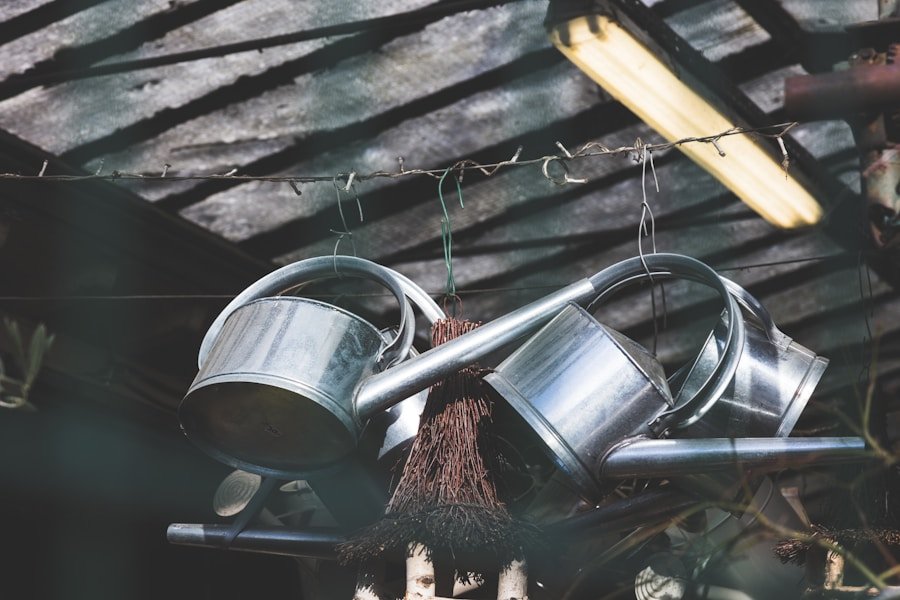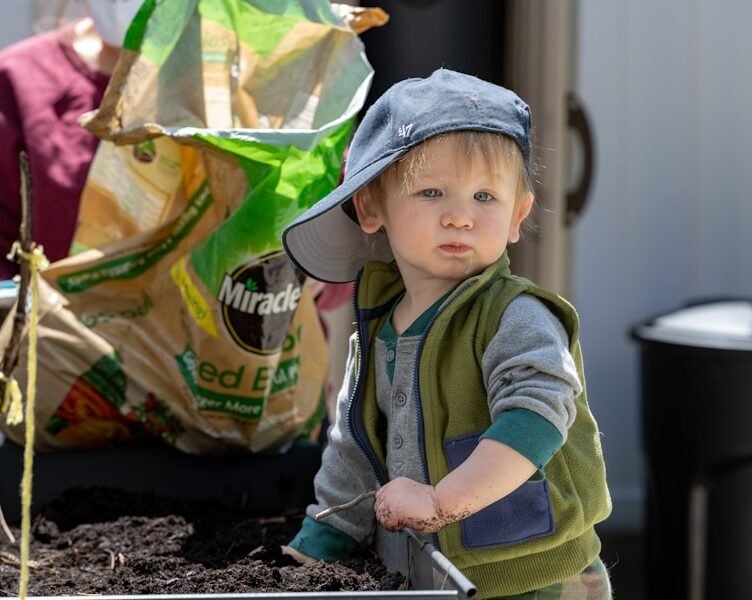Low-light indoor plants have distinct water requirements that differ from those of outdoor plants or high-light indoor plants. It is essential to understand these needs to ensure the health and well-being of your low-light indoor plants. Since these plants undergo less photosynthesis and transpiration, they require less water compared to their high-light counterparts.
This is because they do not need as much water to support their growth and development. However, regular watering is still necessary to prevent them from drying out. The type of soil used for low-light indoor plants also plays a crucial role in their water needs.
Well-draining soil is vital, as it prevents water from accumulating around the roots and causing root rot. Recognizing the signs of overwatering or underwatering, such as yellowing leaves, wilting, or stunted growth, is also essential in understanding the water needs of low-light indoor plants. By acknowledging these needs, you can provide your low-light indoor plants with the optimal amount of water to thrive.
Key Takeaways
- Low-light indoor plants have different water needs compared to plants in brighter conditions
- The best watering method for low-light indoor plants is to water them sparingly and allow the soil to dry out between waterings
- Tips for effective watering of low-light indoor plants include using a watering can with a narrow spout and watering directly at the base of the plant
- Common watering mistakes for low-light indoor plants include overwatering and using cold or chlorinated water
- Adjust watering frequency for low-light indoor plants based on the season and the specific needs of the plant
Choosing the right watering method for low-light indoor plants
Bottom Watering: A Low-Risk Approach
One of the most common methods for watering these plants is bottom watering, which involves placing the plant’s pot in a shallow tray of water and allowing the soil to soak up the water through the drainage holes in the bottom of the pot. This method is ideal for low-light indoor plants, as it ensures that the roots receive adequate moisture without overwatering the plant.
Misting: A Humidity-Boosting Technique
Another effective watering method for low-light indoor plants is using a spray bottle to mist the leaves and soil. This method is particularly useful for plants that require higher humidity levels, as it helps to create a more humid environment around the plant. However, it is important to avoid misting the leaves too frequently, as this can lead to fungal diseases and other issues.
Choosing the Right Watering Method for Optimal Health
By choosing the right watering method for your low-light indoor plants, you can ensure that they receive the moisture they need to thrive without risking overwatering or underwatering.
Tips for watering low-light indoor plants effectively
Watering low-light indoor plants effectively requires a few tips and tricks to ensure that they receive the right amount of moisture without being overwatered or underwatered. One tip is to water your plants in the morning, as this allows any excess water to evaporate throughout the day and prevents the soil from becoming waterlogged. Additionally, it is important to water your plants at the base of the plant rather than on the leaves, as wet leaves can lead to fungal diseases and other issues.
Another tip for watering low-light indoor plants effectively is to use room temperature water, as cold water can shock the roots and hot water can scald them. It is also important to water your plants thoroughly, ensuring that the entire root ball is moistened. This can be achieved by watering the plant until water begins to drain out of the bottom of the pot.
By following these tips, you can ensure that your low-light indoor plants receive the right amount of moisture to thrive.
Avoiding common watering mistakes for low-light indoor plants
| Watering Method | Frequency | Best for Plants |
|---|---|---|
| Bottom Watering | Once a week | Prevents overwatering and promotes deep root growth |
| Misting | Every 2-3 days | Keeps foliage hydrated in low-light conditions |
| Using a Watering Can | Once a week | Allows for controlled watering and prevents waterlogging |
There are several common watering mistakes that can negatively impact the health and well-being of low-light indoor plants. One of these mistakes is overwatering, which can lead to root rot, fungal diseases, and other issues. Overwatering occurs when a plant’s roots are constantly sitting in water, preventing them from receiving adequate oxygen and leading to their deterioration.
To avoid overwatering your low-light indoor plants, it is important to allow the soil to dry out slightly between waterings and to ensure that the pot has proper drainage. Another common watering mistake for low-light indoor plants is underwatering, which can cause wilting, yellowing leaves, and stunted growth. Underwatering occurs when a plant does not receive enough moisture to support its growth and development.
To avoid underwatering your low-light indoor plants, it is important to monitor their moisture levels regularly and water them when the top inch of soil feels dry to the touch. By avoiding these common watering mistakes, you can ensure that your low-light indoor plants remain healthy and vibrant.
Using the right water for low-light indoor plants
The type of water you use to water your low-light indoor plants can also impact their health and well-being. Tap water often contains chemicals such as chlorine and fluoride, which can be harmful to plants if used consistently. To avoid these issues, it is best to use filtered or distilled water when watering your low-light indoor plants.
This ensures that they receive clean, chemical-free water that will not harm their roots or foliage. In addition, it is important to avoid using soft water or water that has been treated with a water softener, as this can contain high levels of salt that can be harmful to plants. Using the right water for your low-light indoor plants is essential for their overall health and well-being, as it ensures that they receive clean, chemical-free moisture that will not harm them in any way.
Adjusting watering frequency for low-light indoor plants
Watering Frequency for Low-Light Indoor Plants The frequency of watering low-light indoor plants depends on various factors, including the type of plant, pot size, and environmental conditions. Generally, low-light indoor plants require less frequent watering than high-light plants, as they undergo less photosynthesis and transpiration, and therefore need less water to support growth and development.
Monitoring Moisture Levels
To adjust the watering frequency, it’s essential to regularly monitor the moisture levels of your low-light indoor plants. Water them only when the top inch of soil feels dry to the touch, ensuring they receive adequate moisture without being overwatered or underwatered.
Environmental Factors to Consider
When adjusting the watering frequency, consider environmental factors such as temperature and humidity, as these can impact how quickly the soil dries out. By taking these factors into account, you can ensure your low-light indoor plants receive the right amount of moisture.
Optimal Watering for Thriving Plants
By adjusting the watering frequency for your low-light indoor plants, you can provide them with the optimal amount of moisture to thrive. This will help them grow and develop healthily, even in low-light conditions.
Monitoring the moisture levels of low-light indoor plants
Monitoring the moisture levels of your low-light indoor plants is essential for ensuring that they receive the right amount of water to thrive. One way to monitor their moisture levels is by using a moisture meter, which measures the moisture content of the soil and indicates when it is time to water your plants. This tool can be particularly useful for beginners or those who are unsure of when to water their low-light indoor plants.
Another way to monitor the moisture levels of your low-light indoor plants is by checking the soil with your finger. Simply insert your finger into the soil up to the first knuckle and feel for moisture. If the soil feels dry at this depth, it is time to water your plant.
By monitoring the moisture levels of your low-light indoor plants regularly, you can ensure that they receive adequate moisture without being overwatered or underwatered. This helps to promote their overall health and well-being. In conclusion, understanding how to effectively water low-light indoor plants is essential for their health and well-being.
By choosing the right watering method, following tips for effective watering, avoiding common watering mistakes, using the right water, adjusting watering frequency, and monitoring moisture levels, you can ensure that your low-light indoor plants receive adequate moisture without being overwatered or underwatered. This helps to promote their overall health and well-being and ensures that they remain healthy and vibrant for years to come.
FAQs
What are low-light indoor plants?
Low-light indoor plants are plants that can thrive in environments with minimal natural light. These plants are well-suited for indoor spaces with limited access to sunlight, such as offices or rooms with small windows.
What is the best way to water low-light indoor plants?
The best way to water low-light indoor plants is to allow the soil to partially dry out between waterings. Overwatering can lead to root rot, while underwatering can cause the plants to wilt. It’s important to water the plants thoroughly, allowing excess water to drain out of the bottom of the pot to prevent waterlogged soil.
How often should low-light indoor plants be watered?
The frequency of watering low-light indoor plants can vary depending on factors such as the type of plant, the size of the pot, and the environmental conditions. In general, it’s recommended to water low-light indoor plants when the top inch of the soil feels dry to the touch. This may range from once a week to once every two weeks.
Should low-light indoor plants be misted?
Misting low-light indoor plants can help increase humidity around the plants, which can be beneficial in dry indoor environments. However, misting should not be a substitute for proper watering, as it only provides moisture to the plant’s leaves and not its roots. It’s important to use a fine mist and avoid over-misting, which can lead to fungal issues.
What type of water should be used to water low-light indoor plants?
Low-light indoor plants are generally tolerant of tap water, but some plants may be sensitive to chemicals or minerals found in tap water. Using filtered or distilled water can help reduce the risk of mineral buildup in the soil and on the plant’s leaves. It’s also important to avoid using water that is too cold, as it can shock the plants.





